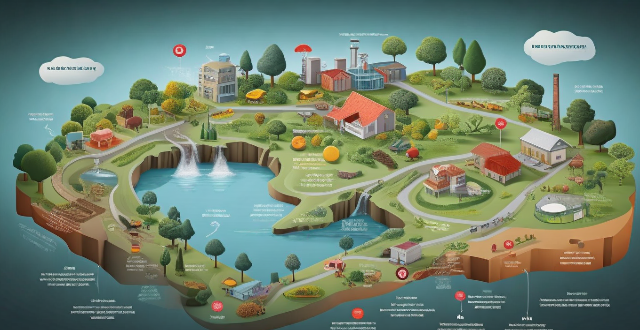Climate change significantly affects agriculture and food security by increasing extreme weather events, altering crop yields and quality, impacting livestock, and raising concerns about food access, affordability, and biodiversity loss. Adaptation and mitigation strategies such as sustainable farming practices, water management, genetic research, and policy initiatives are essential to build a resilient food system.

How Climate Change Affects Agriculture and Food Security
Climate change is one of the most pressing issues of our time, with far-reaching impacts on various sectors, including agriculture and food security. The agricultural sector is particularly vulnerable to climate change due to its dependence on climatic conditions for crop growth and livestock health. Here's a detailed look at how climate change affects agriculture and food security:
Extreme Weather Events
Increased Frequency and Severity
- Heavy Rainfall and Floods: These events can destroy crops, damage infrastructure, and lead to soil erosion, reducing agricultural productivity.
- Droughts: Prolonged dry spells can severely limit water availability for irrigation, affecting crop yields and quality.
- Heat Waves: High temperatures can stress plants and animals, leading to reduced growth rates and increased susceptibility to diseases.
Unpredictable Seasons
Changes in seasonal patterns disrupt traditional planting schedules, making it difficult for farmers to plan and manage their crops effectively.
Changes in Crop Yields and Quality
Variation in Growth Patterns
Altered temperature and precipitation patterns can affect the growth cycles of crops, leading to unpredictable yields and reduced nutritional content.
Pests and Diseases
Warmer temperatures can expand the range of pests and diseases, posing new threats to crops and requiring additional management practices.
Livestock Impacts
Heat Stress
High temperatures can reduce livestock productivity by affecting feed intake, reproduction, and overall health.
Changes in Forage Quality and Availability
Shifts in vegetation patterns due to climate change can affect the quality and availability of forage for grazing animals.
Food Security Concerns
Access and Affordability
Climate change can exacerbate food insecurity by reducing access to affordable and nutritious food options, especially in areas heavily reliant on agriculture.
Price Fluctuations
Unstable crop yields can lead to volatile food prices, making it difficult for consumers to access essential goods.
Loss of Biodiversity
Loss of biodiversity due to changing climates can impact the variety of foods available, potentially reducing dietary diversity.
Adaptation and Mitigation Strategies
Sustainable Farming Practices
- Conservation Agriculture: Minimizing soil disturbance helps maintain soil health and moisture levels.
- Integrated Pest Management: Reducing reliance on chemical pesticides through biological controls.
- Cover Crops and Rotation: Enhancing soil fertility and reducing erosion.
Water Management
- Irrigation Efficiency: Using drip irrigation or other efficient methods to conserve water.
- Rainwater Harvesting: Capturing rainwater for later use in irrigation.
Genetic Research
- Drought-Resistant Crops: Developing varieties that can survive with less water.
- Pest and Disease Resistance: Breeding crops that are more resistant to common threats.
Policy Initiatives
- Climate-Smart Agriculture: Government policies supporting sustainable farming practices.
- Disaster Relief Programs: Financial assistance during extreme weather events.
Conclusion
Climate change presents significant challenges to global agriculture and food security. By understanding these impacts and implementing effective adaptation and mitigation strategies, we can work towards building a more resilient food system for future generations.